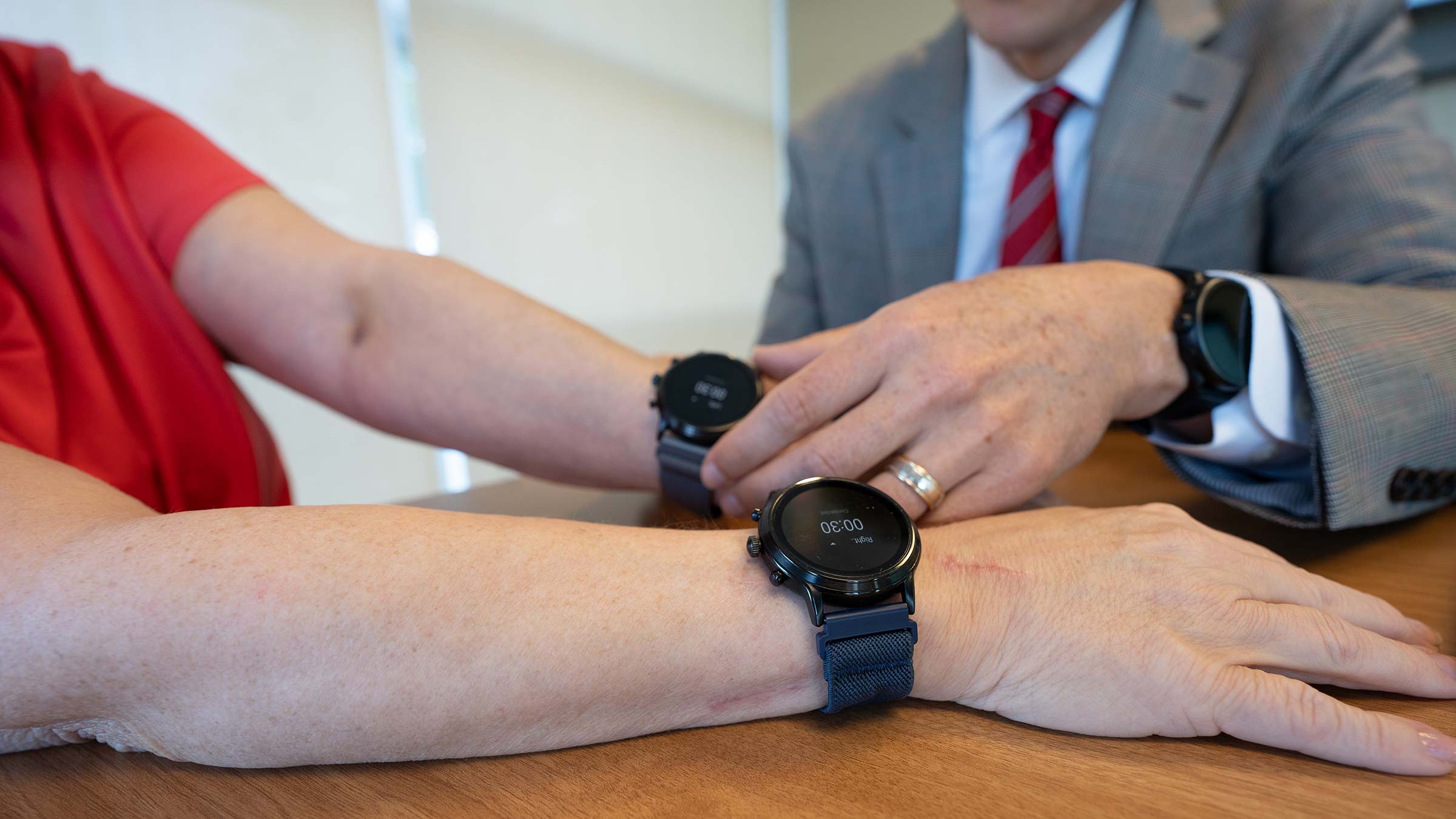
Researchers at The Ohio State University Comprehensive Cancer Center – Arthur G. James Cancer Hospital and Richard J. Solove Research Institute (OSUCCC – James) are testing whether custom smartwatches can catch the subtle warning signs of early lymphedema before the condition becomes harder to manage.
What is lymphedema?
Lymphedema is the buildup of fluid, most often in arms and legs, causing swelling. It can especially affect cancer survivors, with people who have had cancer surgery or radiation therapy for breast cancer and melanoma at the highest risk.
When any part of your lymphatic system is damaged or missing, you’re at higher risk for lymphatic fluid to collect in tissues, causing swelling. That clear lymphatic fluid collecting under the skin can cause sometimes-debilitating pain and discomfort, especially when it’s uncontrolled.
Lymphedema affects about 90 million people globally.
What does this smartwatch do?
Adhesive-based sensors will gather real-time data on changes in tissue, using custom Android-based smartwatch software that Ohio State University engineering students helped develop.
The sensors detect changes in blood volume through photoplethysmography, an optical technique. They can also detect how tissue responds to an external electrical current through what’s called bioimpedance. These two methods together give health care teams the data they need to identify an increase in fluid retention, a sign of early lymphedema.
“We may be able to take steps to avoid lymphedema altogether or slow down the pace at which it accumulates over time, and that is so important for our cancer survivors’ quality of life,” says Lynne Brophy, MSN, APRN-CNS, an oncology clinical nurse specialist helping lead the trial at the OSUCCC – James alongside Carlo Contreras, MD, a surgical oncologist.
How the clinical trial works
This trial, called Project Limb Rescue, will recruit up to 35 people ages 19-90 who have lymphedema in one arm, and have them wear the smartwatch for a period of time.
Dr. Contreras and Brophy’s hope is that findings will lead to a future in which more patients could have real-time monitoring through a watch that detects these signs of lymphedema early, conveniently and painlessly, getting them to a physical therapist or other medical professional for lymphedema management quickly.
“We think a device like this used over the long term could settle patients’ fears and give them more control so they’ll know they’re doing the most they can to monitor their affected arms and legs, reduce their risk of lymphedema and live rich, full lives,” Dr. Contreras says.
How is lymphedema diagnosed and treated currently?
For now, doctors detect early stages of lymphedema only through a bioimpedance machine at a medical facility. A health care team takes measurements through this machine before and after a surgery that affects lymph nodes, in order to detect any changes in fluid retention.
Why early detection of lymphedema is important
When lymphedema is detected early, it can be easier to control. It might even be able to be reversed with treatment — that is, you may be able to get lymphatic fluid drainage back to normal levels. But there’s no known cure for lymphedema, so once it develops, you’ll likely need some type of ongoing management.
There are many treatments today to prevent and treat lymphedema, including some that the OSUCCC – James is among only a few institutions to offer. Treatment and prevention methods include:
- Compression therapy and bandaging
- Certain exercises
- Manual lymphatic drainage
- Soft tissue mobilization, a type of massage done by a certified lymphedema therapist
- Careful skin care
- Lymphovenous bypass surgery
- Vascularized lymph node transfer surgery
- Liposuction
For more information about Project Limb Rescue and how to participate, email ProjectLimbRescue@osumc.edu or visit its StudySearch page at the Ohio State Clinical and Translational Science Institute.

The choice is clear
Our experts develop and deliver the most advanced targeted treatments leading to better outcomes and more hope.
Learn More





